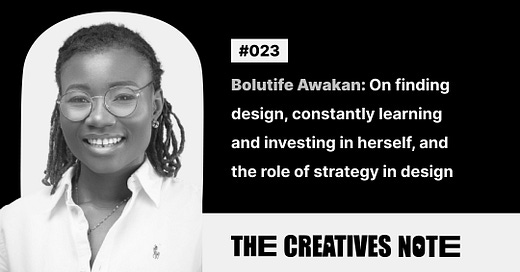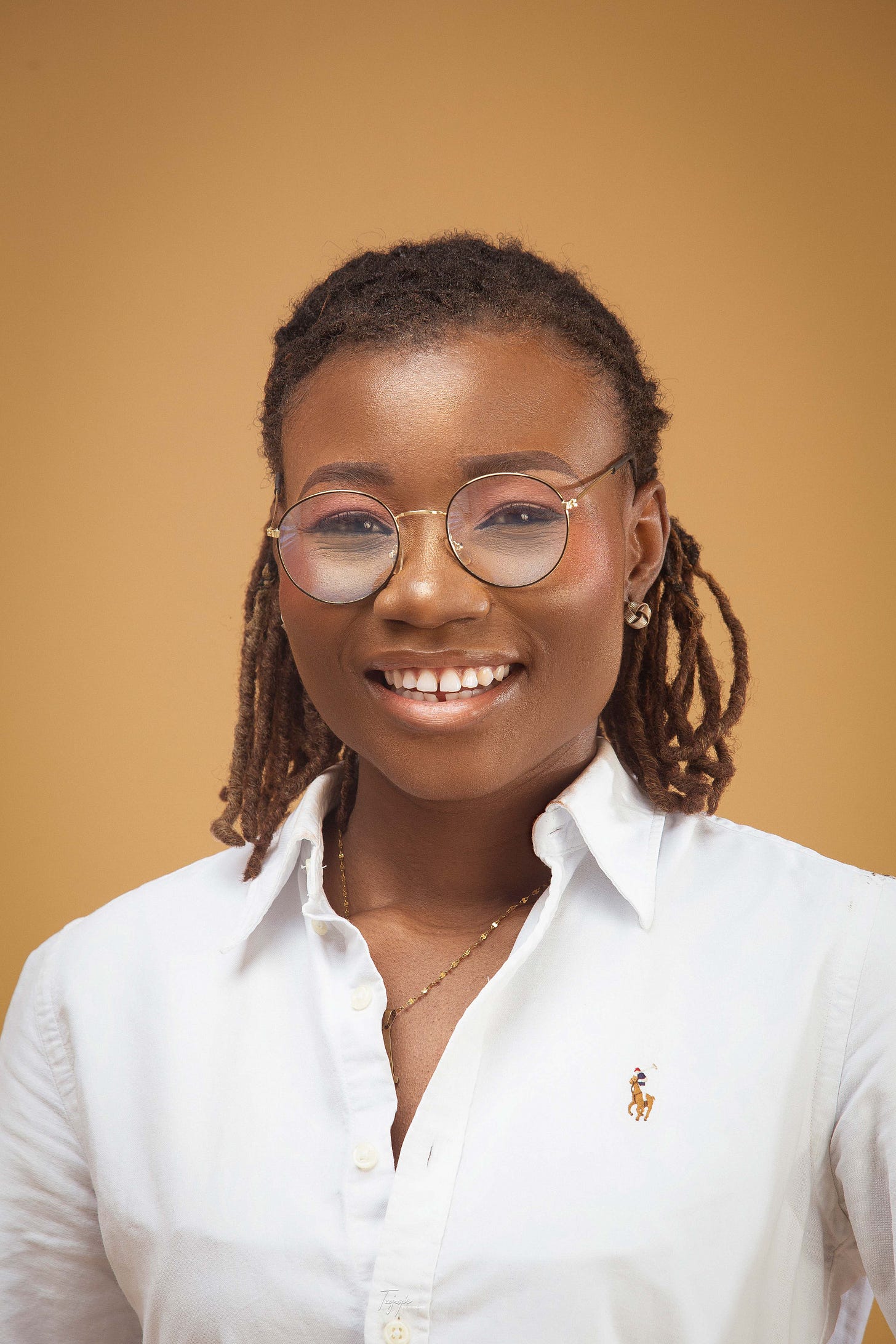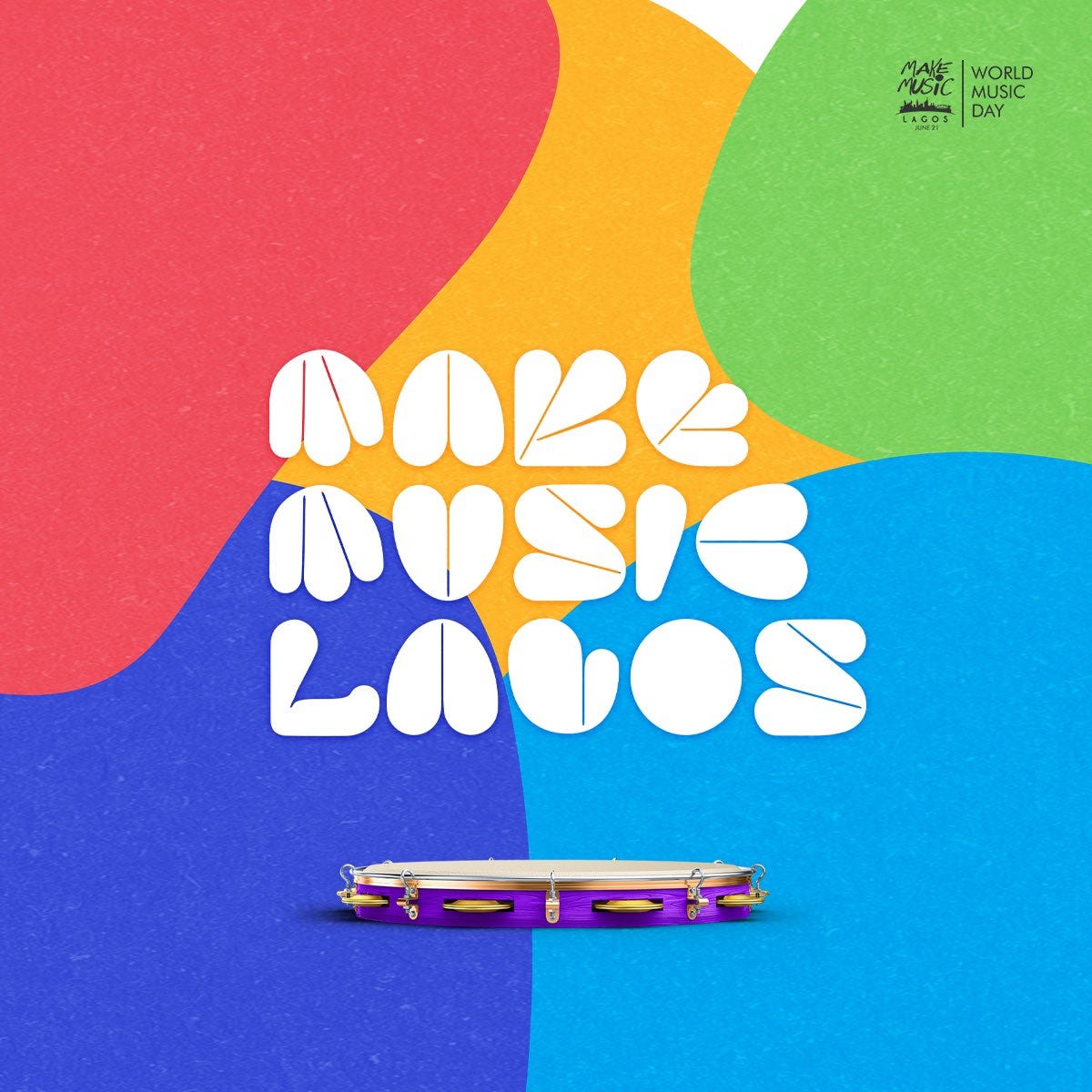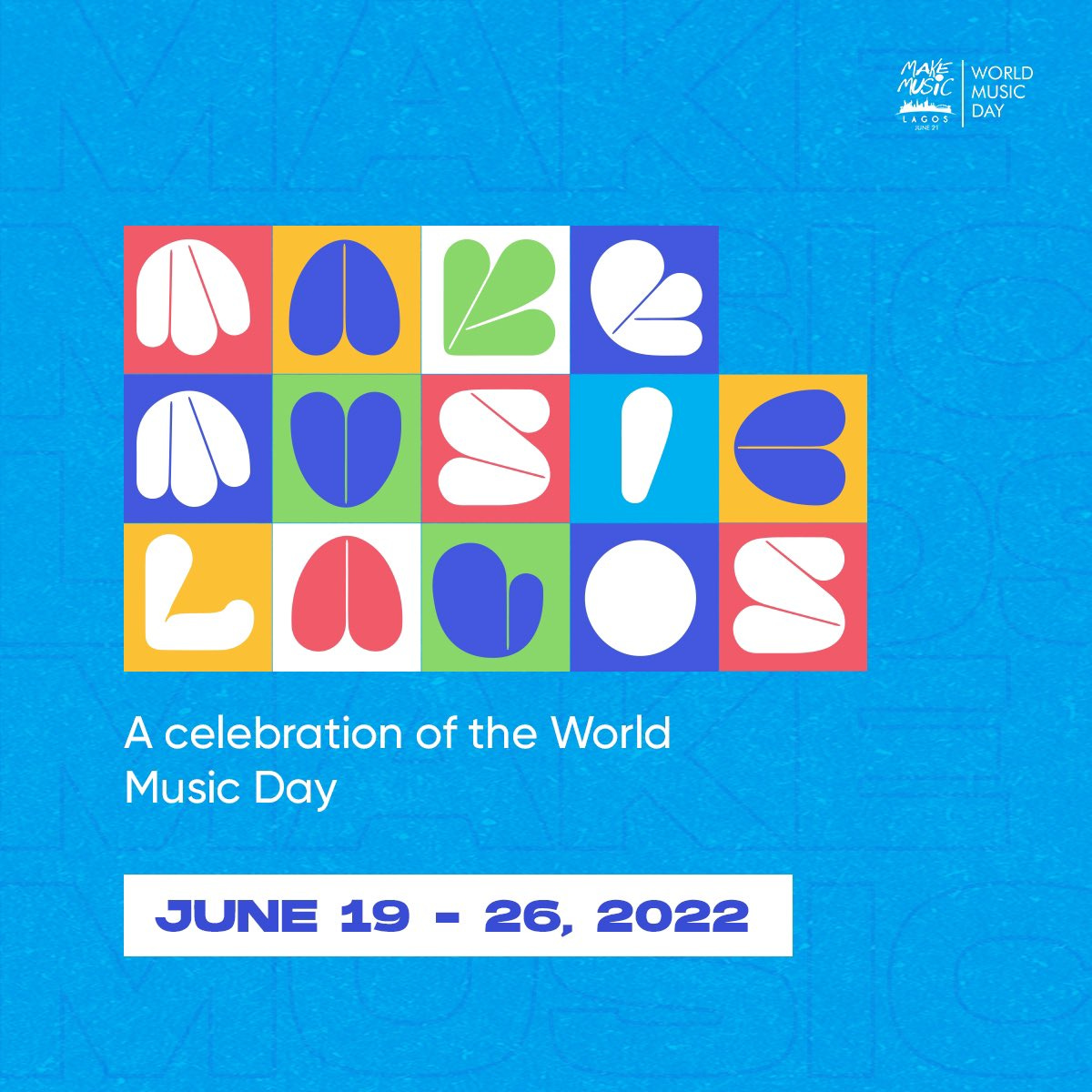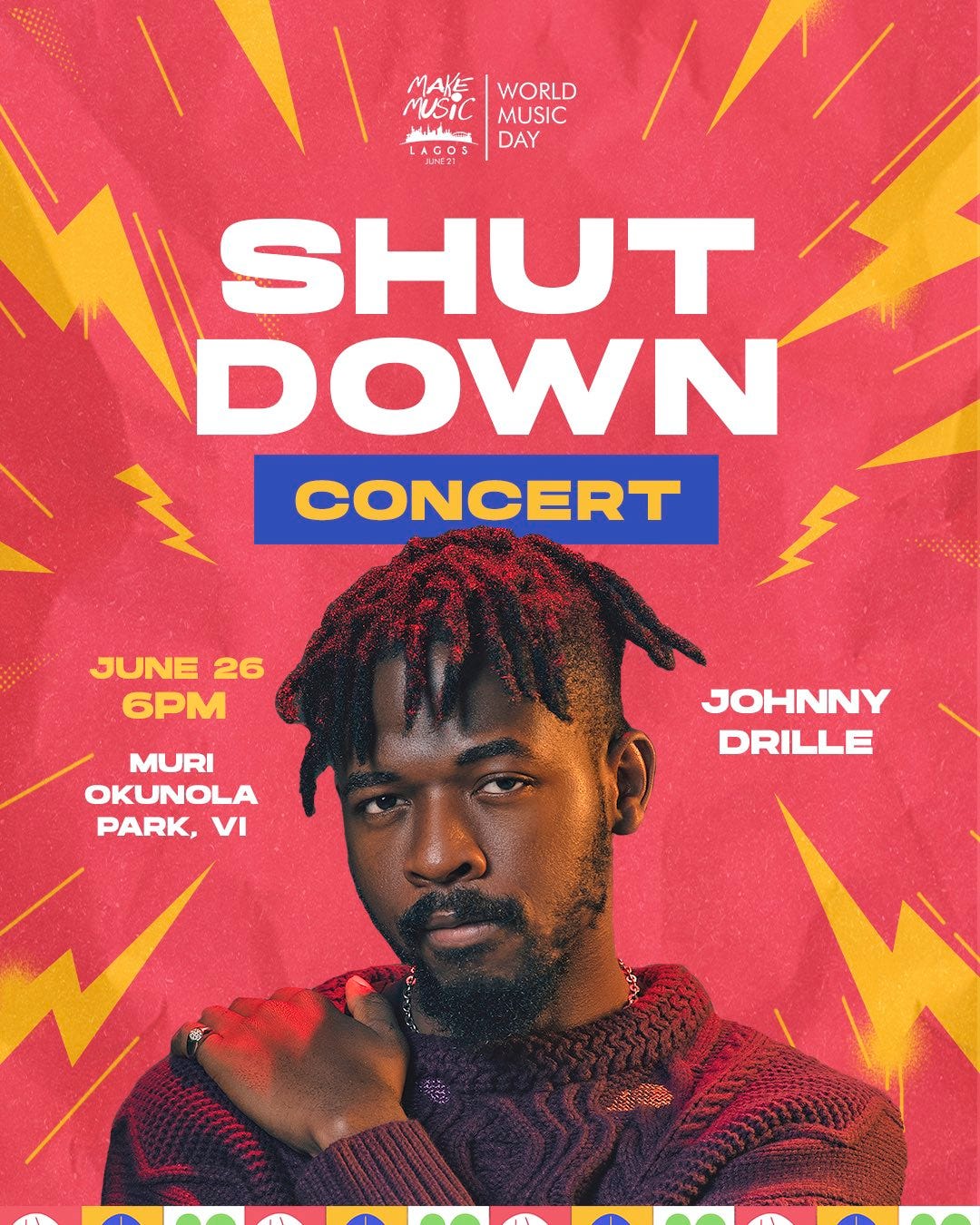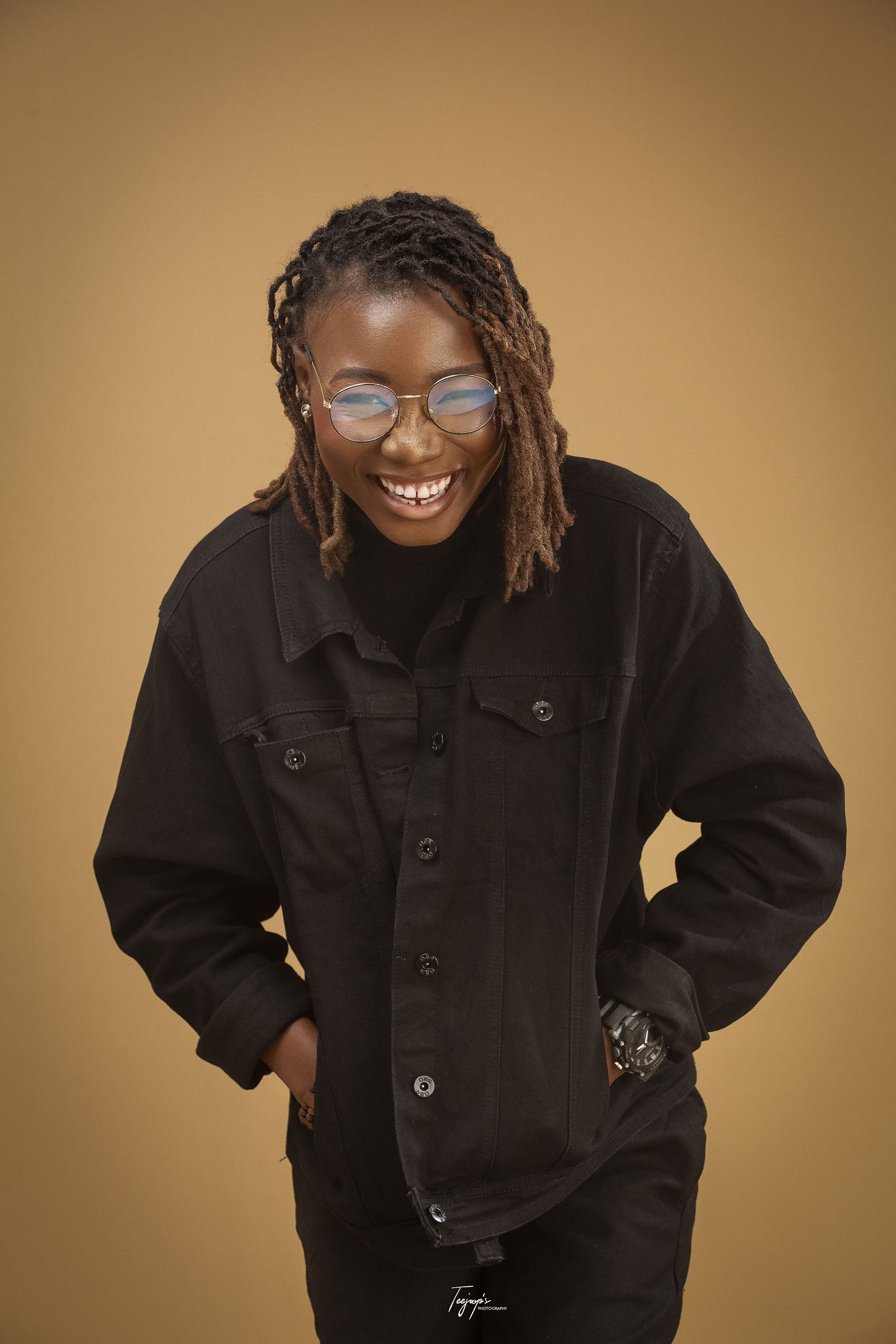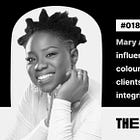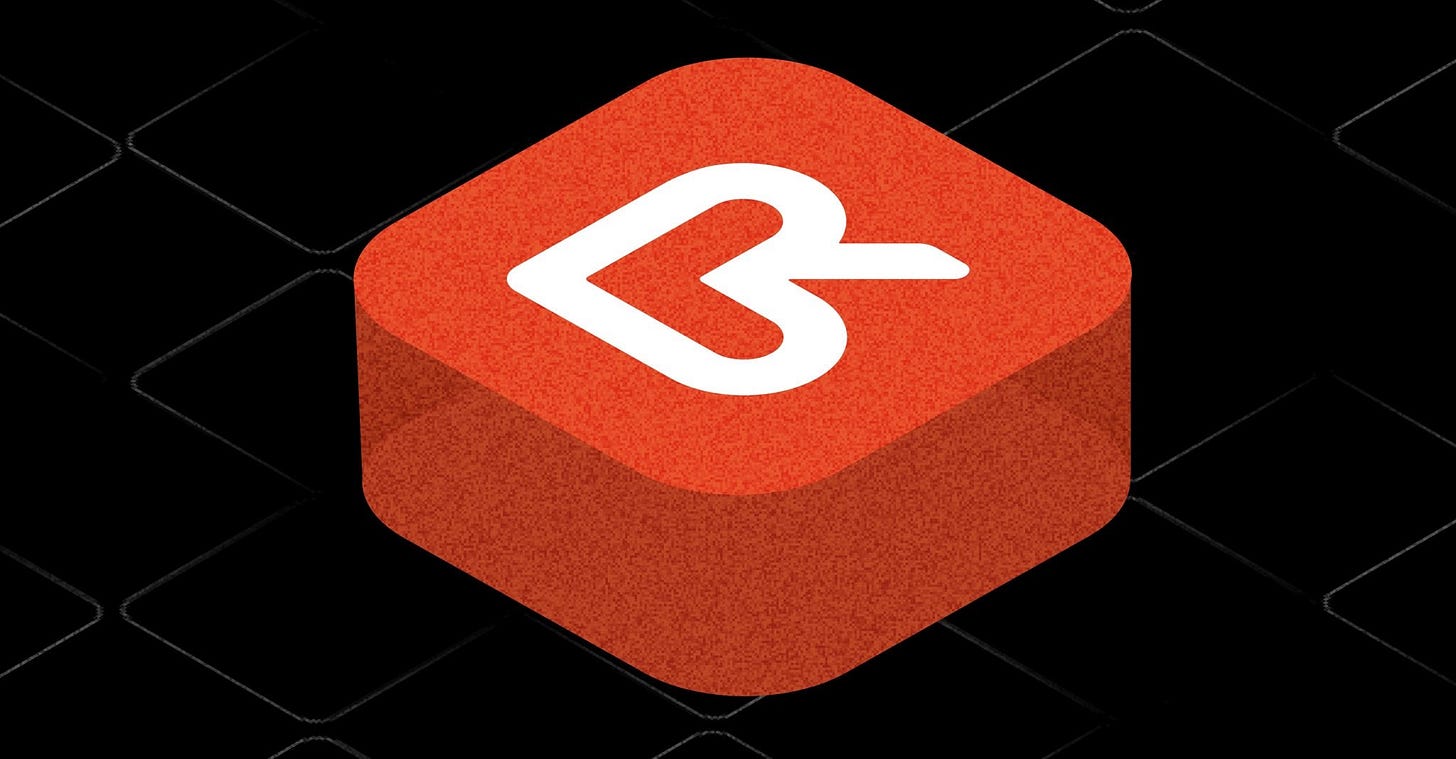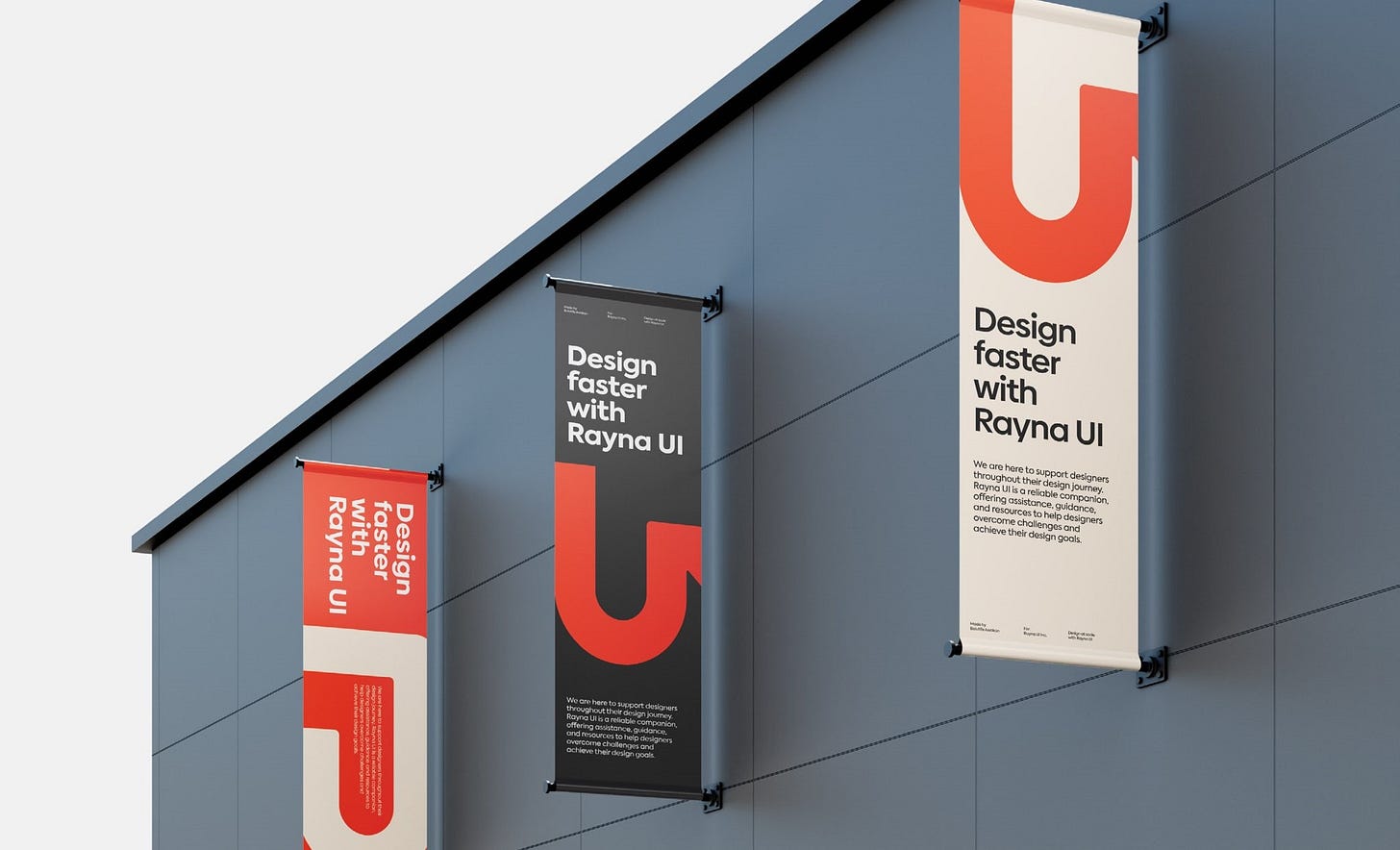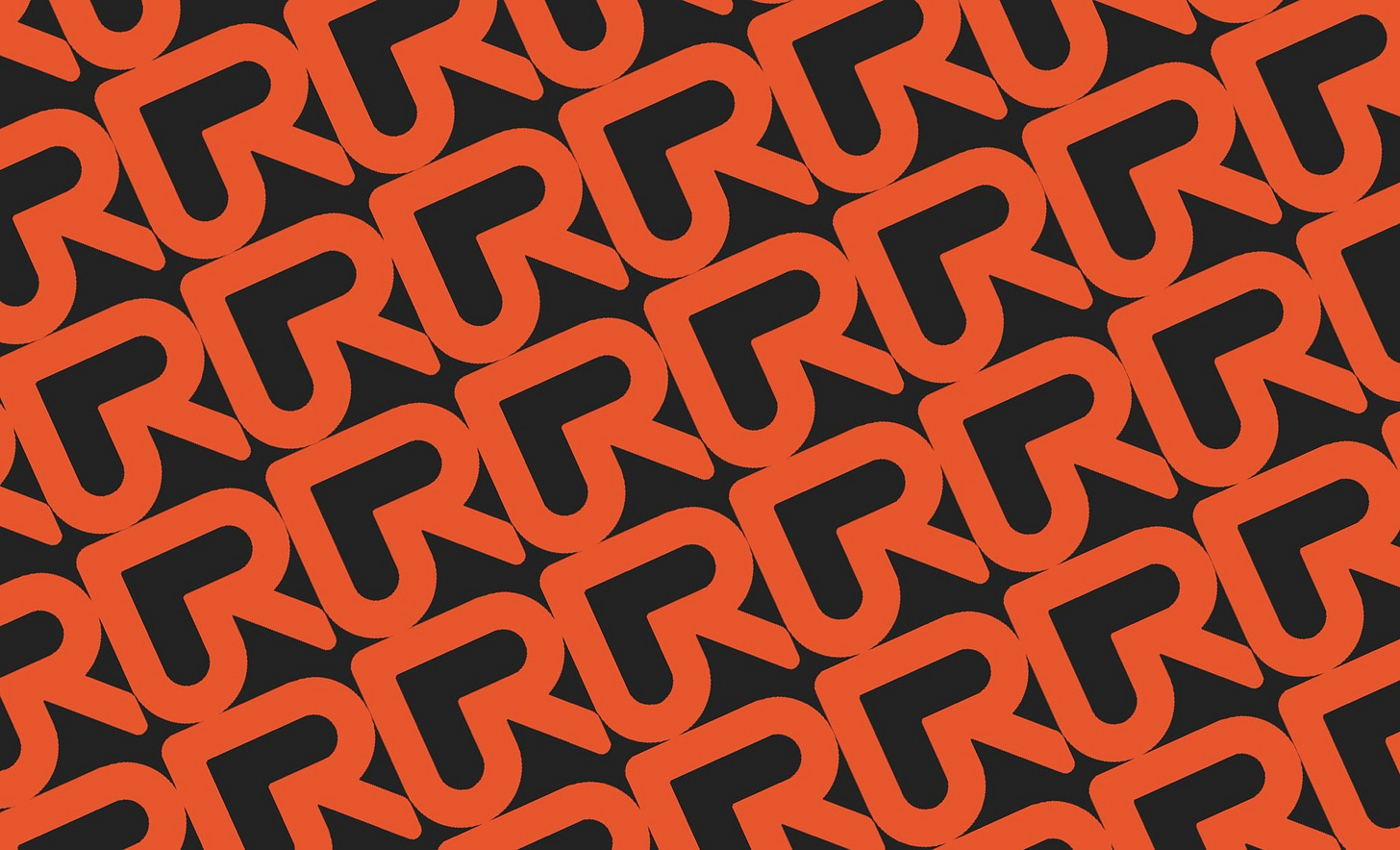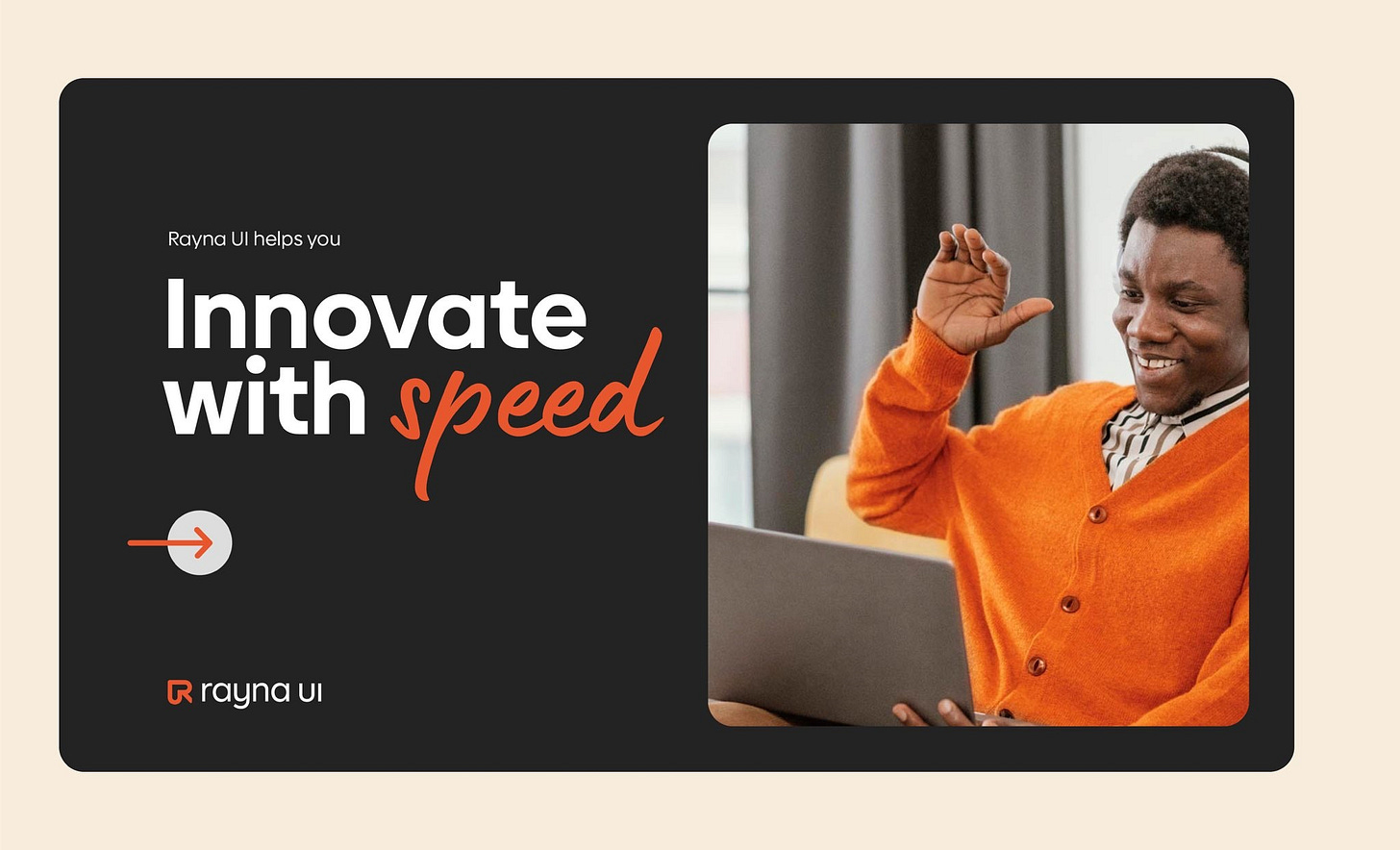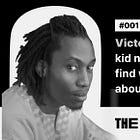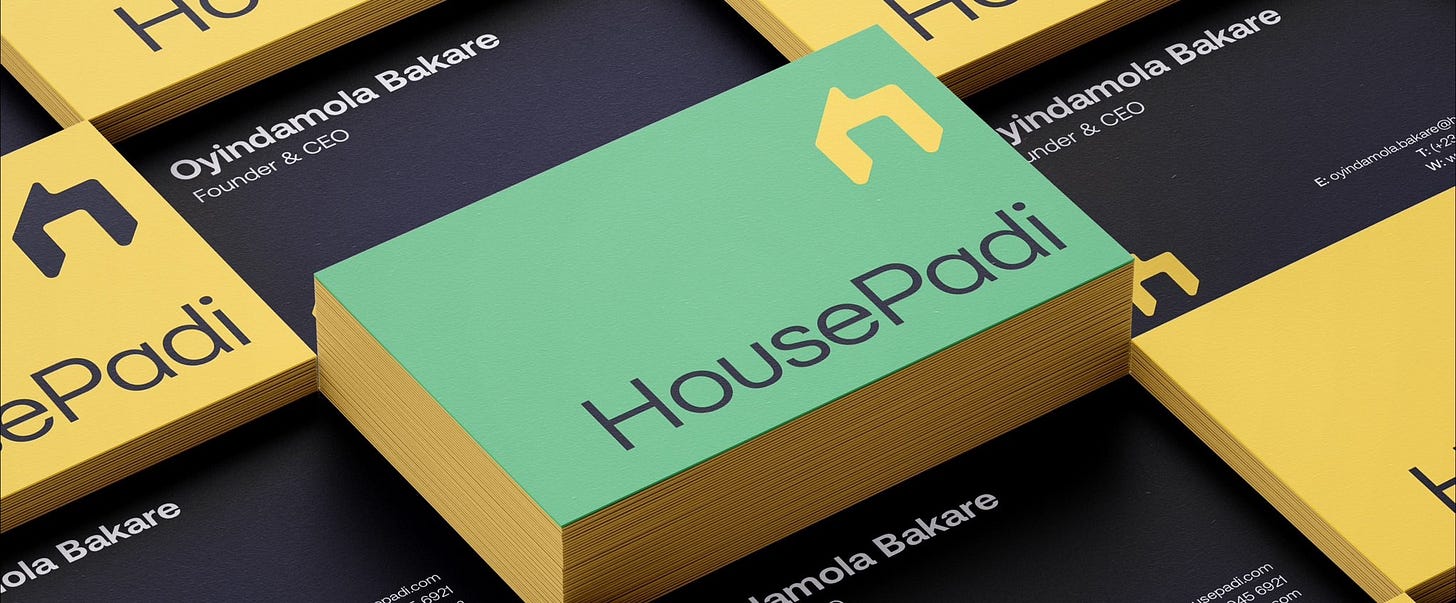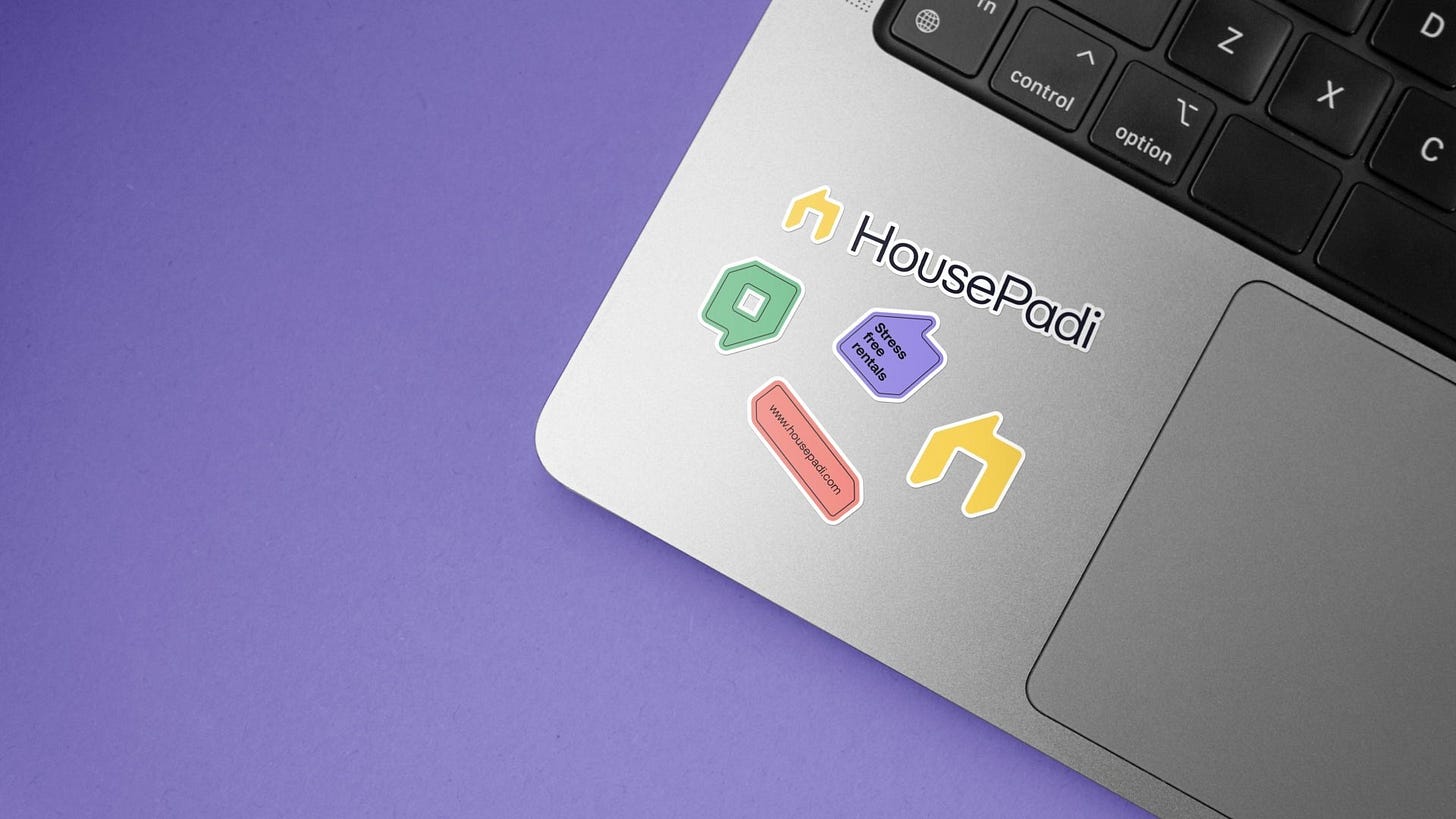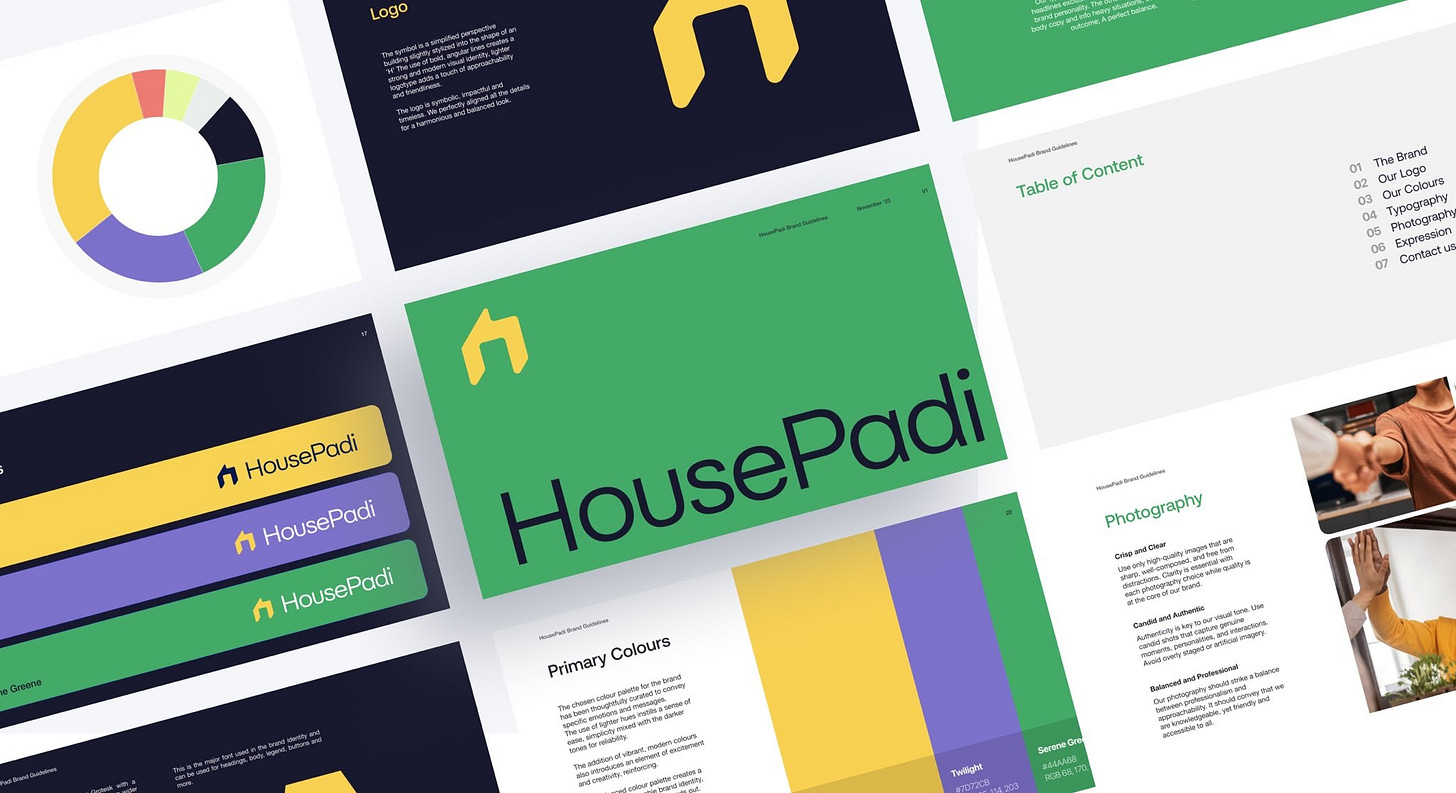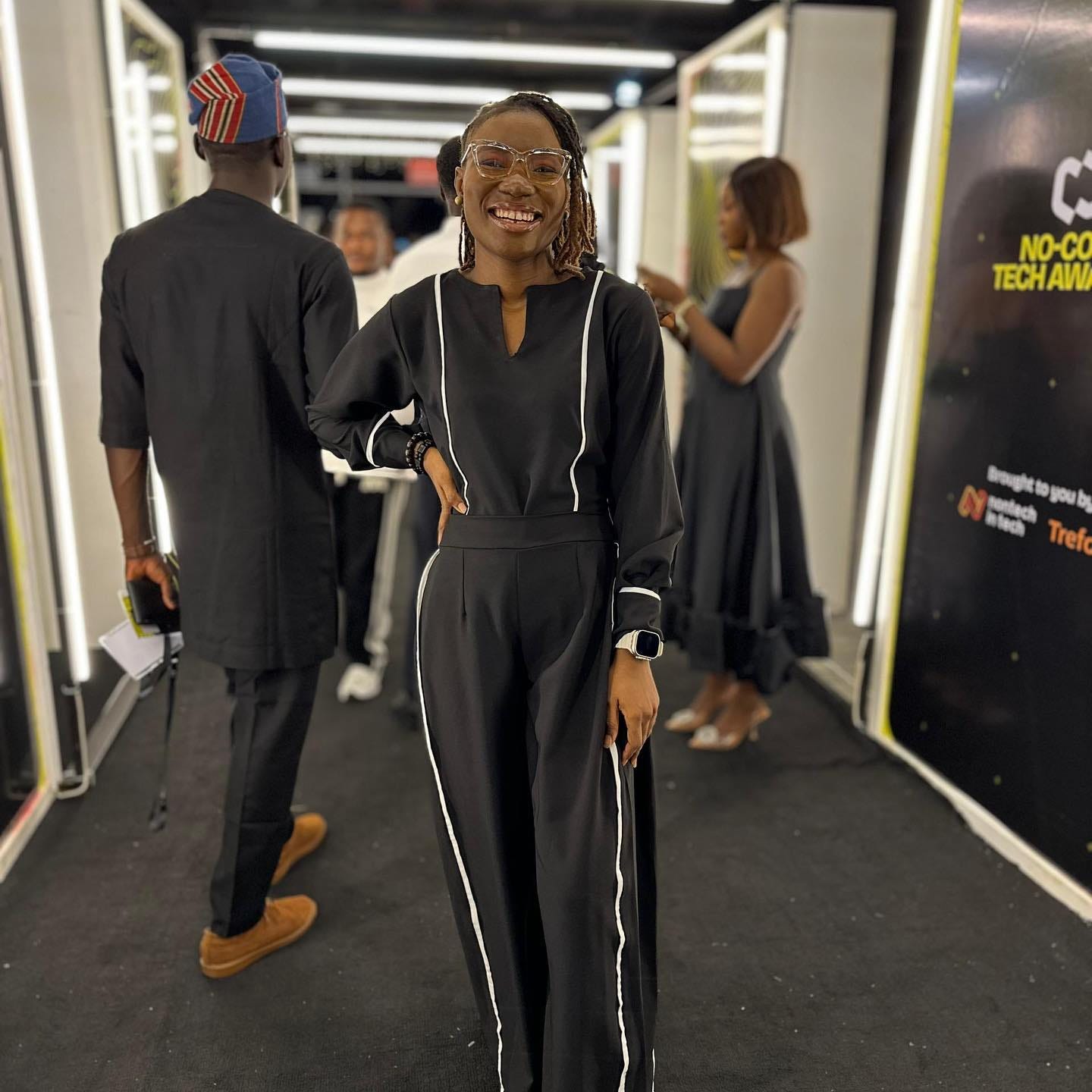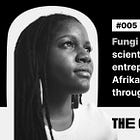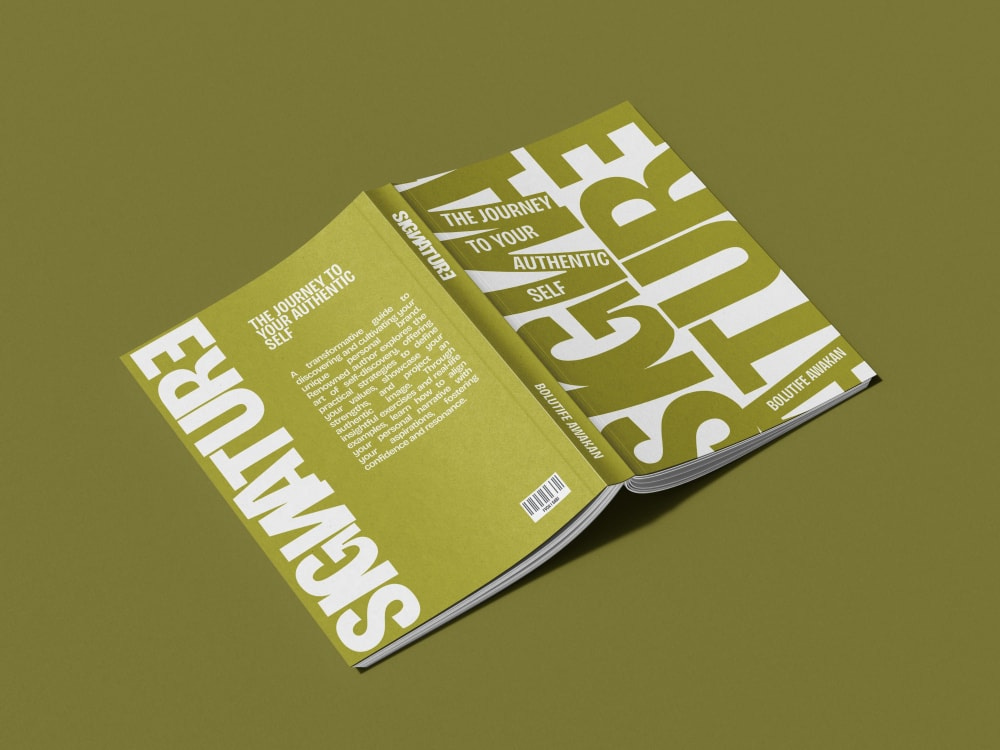Bolutife Awakan: On finding design, constantly learning and investing in herself, and the role of strategy in design — #023
"I invested a lot in learning about myself; understanding myself and knowing when I'm falling short. I learnt to know my strengths and my weaknesses and find a way to balance them."
Hi, thank you for joining us for another edition of our interview with African Creatives. In this edition, I spoke with Bolutife Awakan, a senior brand designer & strategist who currently leads the brand and design team at Traction Apps.
With over 8 years of combined experience in Design, Marketing, Branding, Strategy, and Business growth, she manages the brand and spearheads every creative project at Traction Apps.
In this interview, you will get to know what led her to design, how she got started, what keeps her going, the challenges she faces as a designer and how she navigates them, her favourite projects, the people who inspire her, and the people she would love to collaborate with on a project. You will definitely love and enjoy reading this!
Tell us about yourself
My name is Bolutife Awakan. I am a senior brand designer & strategist with over 8 years of combined experience in Design, Marketing, Branding, Strategy, and Business growth.
I currently lead the brand and design team at Traction Apps; I manage the brand and spearhead every creative project. I also freelance and consult with Nigerian and international organisations on the side.
I love music, movies and sports; I used to do sports but not anymore.
Recently, I won the Brand Designer of the Year Award at No-code Tech Summit 2023.
Interesting! How did you get started with design? What led you to a career in design?
My design journey started when I was studying Food Technology at YABATECH (Yaba College of Technology). As part of my course requirement, I had to take a computer course every semester. In one of the computer courses I took, the lecturer taught us about computer application packages and Coreldraw was at the center of it.
The class was my first encounter with someone speaking about design. Before the class, I had interacted with design but never thought of it in that light. I was a critic, appreciator and collector of design and creative things; I had a lot of screenshots of designs on my phone because I used to just take pictures of any nice design I saw. I collected a lot of images. I just appreciated fine things even though I didn’t know why they were fine or what to look out for. I just collected things that looked fine to me.
During the class, my mind became open and I realised that I could actually learn how to design. After the class, the lecturer gave us an assignment to design an exercise book cover.
I didn't have a computer at the time so I borrowed one from a friend to do the assignment. I designed something based on what the lecturer explained and taught us in class. I wasn't entirely sure of what I was doing, but I think all the images and designs I had been collecting helped me.
When I had issues with navigating Coreldraw, I would ask the owner of the laptop I was using how to go about it. He also helped me with cutting out the background of the image in Photoshop because I had no clue how to do that. (That was the only thing I didn’t do myself). After spending days on the design, I eventually submitted it.
After everyone submitted their designs, the lecturer called me to his office because, according to him, my design was the best in the class. Even now, I can still say the design is fine. Unfortunately, I can’t find the design again.
That experience made me realise I could explore my interest in design. Before this happened, I wanted to pursue a career in food technology because I liked it. But that experience opened my mind and encouraged me to pursue my interest in design. After that, I practised a bit more but didn’t really do much with it until another semester when I had to design for a group project.
I can't tell my design story without mentioning my school a lot because it was an enabler for me. During another semester after my first encounter with design, I had to take a course on entrepreneurship, and as part of the requirement, we had to do a group project. For the group project, we had to come up with a product; package and brand it, market it, and submit a report on it.
That particular semester, my group was stranded because we couldn't find someone to design and print the package for our project. So I decided to take it up. I did some research - I checked online for inspiration and tutorials on how to design a product package. Based on my research, I came up with something and my group members liked it. When other group members saw it, they also liked it so they asked me to help them design theirs as well.
This was my first big break in design. It was the first time I was paid to design. After designing, I needed to print so I just went to Somolu - a popular printing hub in Lagos. I ransacked the place till I found someone who could print a sticker for me. We submitted our project and got very good grades - the lecturer really liked our packaging.
After that semester, I became the official designer of the class and eventually started designing posters for people during the faculty elections.
When did you decide to go full-time into design?
As part of my school program, I had to do a compulsory one-year internship at a company. I got lucky to find a part-time job, which was where I worked on Make Music Lagos - the work I am mostly known for.
In 2017, I got to volunteer for them; doing admin stuff. I didn’t tell them I could design but in 2018, their designer went for NYSC and they were stranded. I still didn’t say anything but somebody on the team asked me if I could design because they saw me post about design on my WhatsApp status. I was shy and was not confident in myself because of the scale of the event.
Fortunately for me, they had created the design theme for the event, so I just had to scale it across different systems. I designed posters for individual artists; over 200 artists. Till today, my boss at the time still refers to it. She was so happy.
After one year, I had to go back to school so I couldn't work on it in 2019. But in 2020, I just owned the project and led the design in 2020. After I graduated from school, I was retained to work in the company.
I spent the early years of my design career working for the company, which operated in the entertainment space, before moving to the tech industry.
How would you describe the journey and your experience so far?
I would say it has been inspiring.
People often say this when I share my story. Personally, I also feel inspired whenever I think about my journey and how far I have come. Nothing can make me stop now.
How would describe what you do to a five-year-old?
I would say I help businesses find their style and help them be exceptional at it. I also create beautiful and useful pictures that make their customers pick them over other people.
What is your day-to-day routine? What does a typical day look like for you?
On a typical day, I do my devotion when I wake up. After that, my alarm for my one-hour learning time would probably come on. During this one hour, I either read a book, watch a course or a tutorial, or just do anything related to learning.
When the one hour is over, I start my day. My days are usually filled with meetings so I have to sit in a lot of meetings to make sure that we are going in the direction we need to go as a company. In between the meetings, I get some designs done.
On days when there’s a lot of workload, I do more of designs. Once I am done with my tasks for the day, I get back to learning. By 7 pm, I get another one hour of learning time. My calendar has two slots for learning in a day. Whatever I do in that period is left to me.
What do you enjoy most about what you do?
Getting to that HAHA moment, that is, hitting the point of clarity. At this point, everything starts to make sense.
My happiest moments are in the place of strategy - where we are defining what a brand does, what they are all about and what will make them make sense to people before translating it to design.
Strategy comes before design in my process. It is the point of finding the idea that ties everything together.
Related Interview
What is the best career investment you have made as a creative?
I like saying that I'm super grateful that I got to meet people who challenged me early enough. They challenged me in the sense that they made me see myself in the light that I didn’t see myself. This challenge was a boost for my morale and my growth.
People who could recognise the greatness I carried did not hesitate to tell me or help me find ways to express it in a way that didn’t take away from me. This deposited a lot of positivity in me and made me pursue greater things. So, that investment of people in me has been of great help. I thank God for the gift of people who have pushed me and inspired me.
Another thing would be that I learnt about myself early enough. And I always say this, “Self-mastery, self-awareness, understanding yourself, and all those things that we trivialize are important.”
I invested a lot in learning about myself; understanding myself and knowing when I'm falling short. I learnt to know my strengths and my weaknesses and find a way to balance them.
I also learnt some important non-design skills like communication, documentation, and presentation early on. For example, I learnt how to send proper emails when I was volunteering for the company I later worked with. Things like these that designers overlook are the things that set one apart from people who are just able to do design.
Additionally, as an avid learner, I love to learn new things. I don’t believe anything is too hard to learn. So early on when I was not earning that much, I would save my money to buy courses, just so I get the value that I perceived the course would offer. Sometimes I use my last card to learn things. The combination of these small things has had great effects on me and my career.
What are some of the challenges you face as a designer?
The first challenge would be to get your stakeholders - or whoever you are presenting to - to buy into your idea. Sometimes you see it clearly but they don't see it. So, at that point, it is usually difficult because some people are just difficult. You have done your best to communicate with the person but it’s just tough. This is hard for me because I pride myself on the fact that I know how to present to people. But there are times when it’s just very tough.
Another thing would be to get them to invest in the idea you shared. Because, to see it is one thing, to invest in it is another thing. They understood what you presented but it’s hard to get buy-in for the budget to implement your idea.
Another challenge I deal with is coming up with design concepts. Sometimes I just get stuck when I am faced with some wicked design challenges. For example, I worked on a particular project where almost all the concepts I initially came up with for the logo already existed when I did a reverse search for them. A lot of the geometric marks out there look similar. So coming up with something unique can pose a very big challenge.
How do you navigate these challenges?
When I am faced with the challenge of coming up with design concepts, I go back to the basics. This is why strategy is a very key part of my process. I have to find a higher purpose behind that design for me to connect with it to get something unique out of it. I go back to find the missing gaps and create a story out of them because I think in stories; Victor Fatanmi has had a great influence on me when it comes to thinking in stories. In summary, I go back to the idea I want to represent with the design and create a story out of it until it gets clearer.
Related Interview
As for stakeholders and getting them to buy and invest in the vision I have, I usually use an example that would make it more relatable to them. For example, if I want to propose a rebrand and we need to hire an agency, I try to communicate why it is important in business terms. I have learnt to think like a business person. It’s one of the reasons I enrolled in a business school. Sometimes they push back because they don’t like change and sometimes it’s because of the cost. So I make sure to communicate the future implication of not doing it now, which may be them facing a copyright issue and having to spend 10X of the current cost. In summary, I try to understand the reason for the pushback and try to find common ground with them.
Tell us what your workflow and creative process is like.
As I mentioned earlier, my process starts with strategy. It can be a mini or full-on strategy. After the strategy session is done, I move on to generating keywords and ideas, and develop the story that would drive the work.
Once this is done, I find references that represent these abstract ideas and build on them. This is followed by sketching and vectorising the sketches for presentation. I present the ideas and share the thought process behind them.
I receive feedback and work on the feedback until we align.
What are the essential gadgets, tools, and software you use for work daily?
I mostly use Adobe Illustrator and Figma these days. I also use Photoshop, Indesign, and Premiere Pro. I use Google Suite - Doc, Sheet and Slide - a lot as well.
For gadgets, I am fully hooked into the Apple ecosystem. I work on a Macbook. I also use an iPad for learning and sketching.
Read Also: 10 African digital products and platforms you should know and use as a creative/creator
How did the COVID-19 pandemic and lockdown impact you and the work you do as a creative?
I think my exponential growth happened in 2020 because that was when I eventually went fully into branding. And that was because I had a lot more time on my hands due to the lockdown.
Before the lockdown happened, I had a very tight schedule. I mostly didn’t leave the office until 8 pm because I was designing for different brands, sub-brands and events for the company I worked with at the time. The company produced events for A-list artists and I used to handle the design. I also had to work with the printer to make sure the designs came out well. So, it was a lot of work for me, especially towards the end of the year when there were a lot of events happening.
The pandemic slowed things down and forced us to stay indoors. So I had time to learn new skills and complete a lot of certifications. I started learning motion design around this time. After the lockdown, I was back on the job market with more skills, and became more exposed to new opportunities.
How do you handle creative blocks as a creative?
I don’t suffer in silence when I am dealing with creative blocks. I speak up. I communicate with the people I work with if I am stuck. I make sure to communicate and ask for more clarity. I also reach out to my friends and ask for them to share ideas with me, and most of the time, their ideas and suggestions work. Also, in the process of speaking with them, I get ideas.
Another thing I do is check the internet for what has been done before. I try to find what others have done and find a way to make it better. Oftentimes, if I get to see what someone else has done before, I get ideas.
What is the task you don't enjoy doing but you have to do?
It has to be meetings. I do a lot of meetings but I don’t look forward to them except for the few ones that are not long.
What are some of the most exciting projects you have worked on?
The first one is my work for Make Music Lagos. It is a project that has allowed me to express myself.
Another one would be my work for Rayna UI, a component library. It was a comprehensive and challenging project. The team was amazing.
How do you stay creative and motivated to keep creating?
I would say the things I have done. As I mentioned, I look at the past and say to myself that I have come too far to stop now. My previous achievements keep me going, especially on days when I have to deal with a big challenge on a project. I look back a lot. So, having overcome past challenges, I am motivated to overcome new challenges that may come my way.
I also think about the impact of the work I do on people. I measure the result of the work I do to make sure there’s an impact. This helps me to know and make sure that what I am doing is not a waste of time.
How do you relax and have fun?
I love watching movies; mostly thrillers. I watch a lot of crime and psychological thrillers. I also listen to music.
I go out with friends on a few occasions but I am mostly indoors.
Who are the creatives that inspire you?
Bolanle Banwo, Jordan Belonwus, and Victor Fatanmi.
Who are the creatives you would love to work with or collaborate with?
Fungi Dube, Ameji, and the guys at FourthCanvas.
What brand would you love to work with?
What would you be doing if you were not a designer?
I would probably be a professional sportsperson; either football or tennis.
What advice do you have for someone who is at the early stage of their creative journey?
My advice would be to learn the basics and understand design and what it communicates. Because design is as strategic as it is creative.
Also, try to have a purpose in mind. This will guide and keep you going when things get tough. Find a higher purpose behind whatever you do as it will help you get through tough times.
Lastly, find something that would set you apart beyond the technical skills you acquire.
Read Also
What would you consider success and fulfilment in your career when you look back in the next 20 years?
Launching and running a very design-centric print studio and being a design educator and brand consultant.
Also, championing more creative laws that would enable the work of creatives in the country.
Whose story would you love to read about?
Alamu Temitayo.
Do you have anything you would like to plug in or promote?
I'd love to share my book on personal branding that anyone would find handy. Visit the online store to order a copy.
Thank you for sharing with us!!!
Connect with Bolutife on Twitter, Instagram, and LinkedIn.
Thank you for reading and don’t forget to like and share the interview.
See you next time!!!
Follow us on Twitter, Instagram, and LinkedIn to stay up to date.


